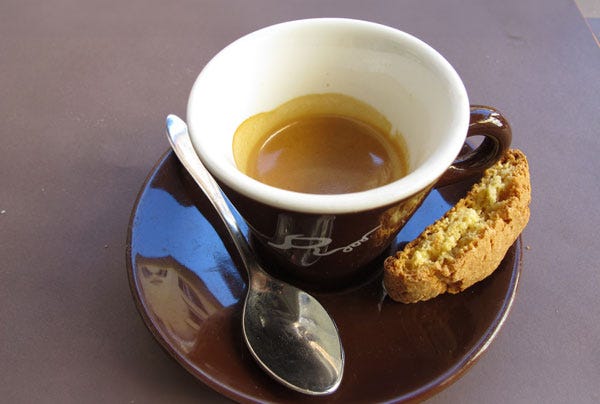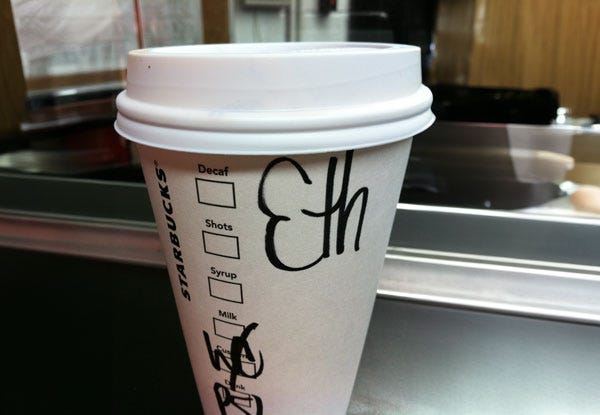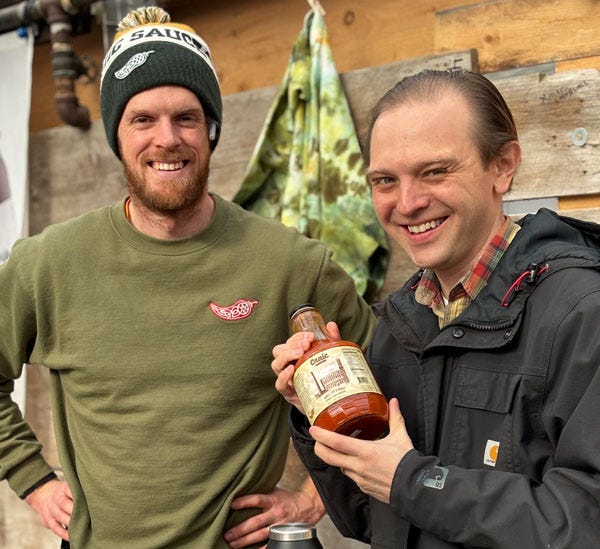Welcome to another edition of Willoughby Hills!
This newsletter explores topics like history, culture, work, urbanism, transportation, travel, agriculture, self-sufficiency, and more.
If you enjoy what you’re reading, please consider a free subscribtion to receive emails every Wednesday and Sunday plus podcast episodes every two weeks. There are also paid options, which unlock even more features.
Yesterday, I was driving home from a winter farmers market with my family when my mother in law pulled out a new card game for us to try called Table Topics. It was basically a series of conversation starter cards designed to make people think and start discussions.
The first card she presented said “What could the government do to encourage people not to litter?”
My wife, kids, mother in law, and I all took a turn proposing some ideas, including increasing patrols for litterbugs and offering more trash bins so people had a place to deposit their waste. They were all ideas to either make littering less convenient or more punitive.
Before it was my turn to answer, I tried to give the matter some thought. (This should come as no surprise to regular readers, as I’ve literally wrote an essay about litter a few months ago).
Rather than try to stop folks predisposed to littering from engaging in the act, I tried to think of how else government funds could be used to help with the problem. The solution that I arrived at: incentivize businesses to use less packaging.
The way that I think about it, the less packaging that comes with all of our stuff, the less litter that would ultimately end up on our roadsides, in our forests, and in our waterways.
Last year, I visited Old Sturbridge Village in Sturbridge, MA, which recreates life in a New England town in the early 1800s. Stopping into their replica general store, I was struck by the simplicity of the retail environment. Most items were unboxed. Bins below the shelves were filled with spices and other dried goods that could be purchased in bulk. The few items that had packaging were usually wrapped in paper, sometimes with a simple label. It was packaging that could easily be used to start a fire or that would biodegrade relatively quickly in a backyard compost pile.
Despite the simplicity of the shopping experience and the packaging of items, customers still had access to exotic imported goods, even in a small New England village. According to Old Sturbridge Village’s website:
“New England stores carried items from around the world, including woolen broadcloth from England; cotton textiles from England, France, and India; linens from Ireland and Central Europe; and silks from China and Italy. In addition, New Englanders could purchase teas, coffees, spices, sugar, raisins, and dyestuff from China, Arabia, Greece, the East and West Indies, and South America.”
A general store could offer simple packaging as they were full service operations. Customers relied on a clerk describe items and fetch them.
That all changed with the advent of self-service grocery stores in the early 20th century. Customers were suddenly free to wander the aisles themselves and select their own goods. I’ve written about this shift before, and I think it’s summed up well by Chester H. Liebs in his book Main Street to Miracle Mile:
“Realizing that supermarket shelves represented millions of feet of free exhibition space for their products, [manufacturers] became increasingly concerned about the way that consumers reacted to the sight of their merchandise. Companies redesigned their labels and redesigned their packaging for maximum appeal.”
These days, packaging is not just generated from store shelves but from restaurants and coffee shops too. I’ve written about my love of Italian espresso culture, where an espresso shot is poured into a ceramic mug, drunk at the espresso bar, and costs one Euro coin (or at least it did when I visited in 2012). But here in America, we drink our coffee in cardboard, plastic, or styrofoam cups with plastic lids that get used once and then discarded.
I recently saw either a post or an ad on Instagram (which I can’t seem to find again) which said that every toothbrush we’ve ever owned is still in existence. Greenpeace backs this up.
It got me thinking about all of the little pieces of plastic that we have brief, incidental contact with that then quickly end up in a landfill where they last at least five of my lifetimes. Long after I’m dead, those plastic coffee stirrers, ballpoint pens, takeout silverware, and plastic drink lids will still be here. (I made a TikTok about this idea last week.)
Those plastics don’t just end up in landfills though. According to The Washington Post earlier this month, a new study just found that nearly 90% of proteins tested contained microplastics, including beef, fish, and tofu. Humans are estimated to be ingesting around 11,000 microplastics per year.
“There’s no way to hide from plastics if you’re eating,” said George Leonard, one of the study’s authors and chief scientist at Ocean Conservancy. “If your desire is like, ‘I want to pick something that doesn’t have any plastic in it,’ you really can’t.”
Yum.
For my money, I do what I can to avoid excess packaging, even if I can’t always control where goods come from. I bring reusable shopping bags with me everywhere. I buy things in bulk when I can, preferably refilling a glass jar rather than getting a new container. When I buy produce from local farms, I opt out of the plastic produce bags to get the items home. The plastic bags that I do have get washed and reused until they deteriorate beyond usefulness.
But perhaps most importantly, I try to consume less overall. This started out of economic necessity when I lost my job at the beginning of the pandemic and went nearly a year and a half without full time employment, but it’s been a mentality that I’ve carried with me now and normalized as a part of my life, even as my economic conditions have improved.
I don’t want to overthink my family’s responses to a card game that we were playing for fun rather than proposing actual legislation, but it did strike me that all of our solutions involved trying to stop litter right before or right after it becomes litter. My initial thoughts were in that vein too. It took some deeper thinking to think about attacking the root of the problem, which is fighting litter before it’s even created.
It’s probably human nature, but so often, we try to solve a problem with a solution, rather than thinking of how to eradicate the problem in the first place. When a houseless population surges, we build more shelters rather than build more housing or subsidize the housing that exists for more vulnerable populations. When insects begin eating food crops, a farmer sprays pesticides, rather than planting something to attract the pests or encouraging predators like ladybugs or birds.
When I was in my 20s and would visit my doctor for my annual checkup, I would often ask him if certain things I was experiencing like heartburn were normal. Instead of investigating my diet or exercise patterns, he always just offered to write me a prescription for heartburn medication. He’s no longer my doctor, and by changing the food that I eat, I no longer have heartburn, seasonal allergies, or chronic headaches.
Sometimes the solution to a problem is to eradicate the problem at its source, rather than to try to treat the symptoms.
This story started with my family returning home from a farmers market, and it feel right to end with a little anecdote from that market. I interviewed Brian Ruhlmann from Craic Sauce on the podcast last month and am a big fan of his hot sauces. Craic recently posted a photo of a GIANT bottle of hot sauce on their Instagram and I immediately wanted to know more.
I learned from Brian that they offer a quarter gallon of hot sauce in a refillable glass bottle for $30 (plus a $5 deposit). His usual five ounce bottles are $10, so this works out to something like a 50% discount to buy in bulk AND the bottle can be refilled and reused rather than discarded.
We are big fans of his fermented sauce known as Mill City Red, which is made with local peppers and other ingredients from area farms. I’m not sure if this sauce will last us a year, six months, or six weeks, but either way, I’m excited to get something that I love at a good price and in a way that cuts back on resources.
How can or should the government help solve litter? Do you think less packaging would help? How do you reduce the amount of plastic that you consume? Please let me know your thoughts- I love hearing from you!
Thanks for reading Willoughby Hills! Subscribe for free to receive new posts and support my work.
Related Reading
Swanky Swigs and Jelly Glasses
If you’ve missed past issues of this newsletter, they are available to read here.










Recently I received a small, mailbox-sized order of four AAA Rechargeable batteries. It arrived in a 6” X 8” X 10” cardboard box. On the box, it touted the use of less cardboard. Why couldn’t it have been sent I in a Tyvek envelope? A previous order of four AA Rechargeable batteries did. Only difference was different shipper.